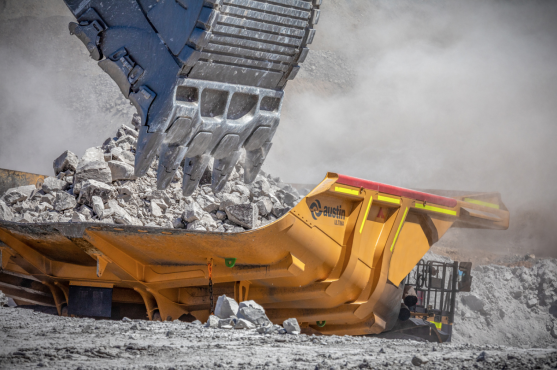Why payload matching and what’s involved in matching an excavator to a truck?
According to David Pichanick, Global Manager Market Development & Innovation at Brisbane-based Austin Engineering, the answers are efficiency, productivity, and profit and understanding factors such as site conditions, load, and haul equipment and production targets.
Anecdotal research has revealed that payload matching around achieving the lowest cost per tonne is not well understood within the mining industry. Irrespective of the loading tool (excavator, shovel, or wheel loader), the accepted goal is to get the payload consistent over time to maximize productivity and production.
Buying the right equipment package – loading tool and dump bodies – is vital and history has shown that the bigger the capex upfront, the better the return on that investment, particularly around reliability and availability. The loading tool comes first, followed by the dump trucks. And, ironically, depending on the equipment package, that could be the start of issues of reduced load and haul productivity.
According to David Pichanick, the most efficient mining bucket, excavator and truck combination in Australia at the moment is a Liebherr R9800 three-pass loading Komatsu 930E-5 dump trucks, fitted with Austin ‘Ultima’ bodies.

So what makes this combination so efficient and consistent?
Every excavator and truck manufacturer will provide researched and validated tables and graphs that show the best truck and excavator combination, of their brand, to maximize payloads. The problem arises when customers don’t buy the same brand of trucks as the excavator, or vice versa.
For reasons of price, contracts, preference, and proven performance history many mining customers will purchase an excavator from OEM ‘A’ and trucks from OEM ‘B’. And because the bodies on the trucks are not matched – as set by the manufacturer – to the loading tool, the concept of payload matching enters a grey area, productivity drops, and costs around the load and haul increase markedly.
This mismatching becomes apparent on-site as truck OEMs look at variations in the 10/10/20 rule to maximize payloads and the direct effect the specific gravity (SG) of the product has on loads. And although unique, these two elements have a close correlation when loads and capacities are being decided.
The 10/10/20 rule has long been recognized as a reliable reference for truck payloads and recognizes that variations occur in SG, fill factors, and loading equipment however, in an attempt to optimize payload capacity truck OEMs are negotiating flexibility around the rule depending on reliable SG readings. Today, SG readings are coming from the digital technology available in the latest loading tools; technology that measures payload per pass and lets loading tool operators see if the SG is changing. A much safer system than waiting till the load is on the truck.
Austin Engineering has a vested interest in any discussions around payload matching. The company designs and manufactures custom-designed excavator buckets and truck bodies for the mining industry but as an independent OEM, they can be objective about their recommendations around payload optimization. Austin conforms to all OEM specifications, globally.
The company has invested heavily in advanced software to match loading tools to truck bodies and, argues Pichanick, devotes a lot of time and effort to the science of payload matching and, by extension, maximizing productivity and profit for the end-user. Which brings the discussion back to the Liebherr R9800 and Komatsu 930E-5 dump trucks – possibly the most efficient excavator and truck combination in Australia at the moment.
“We were asked to provide the truck bodies,” he said. “The customer didn’t want the excavator/truck combination suggested by either supplier but purchased the equipment package they believe will maximize the return – in terms of performance, availability and reliability – over the longer term. Our bodies were custom built to fit the trucks and complement the capabilities of the excavator. The load and haul tonnages they are generating confirm the buying decision.” – David Pichanick, global manager
 Copyright 2020 All rights reserved.
Copyright 2020 All rights reserved.